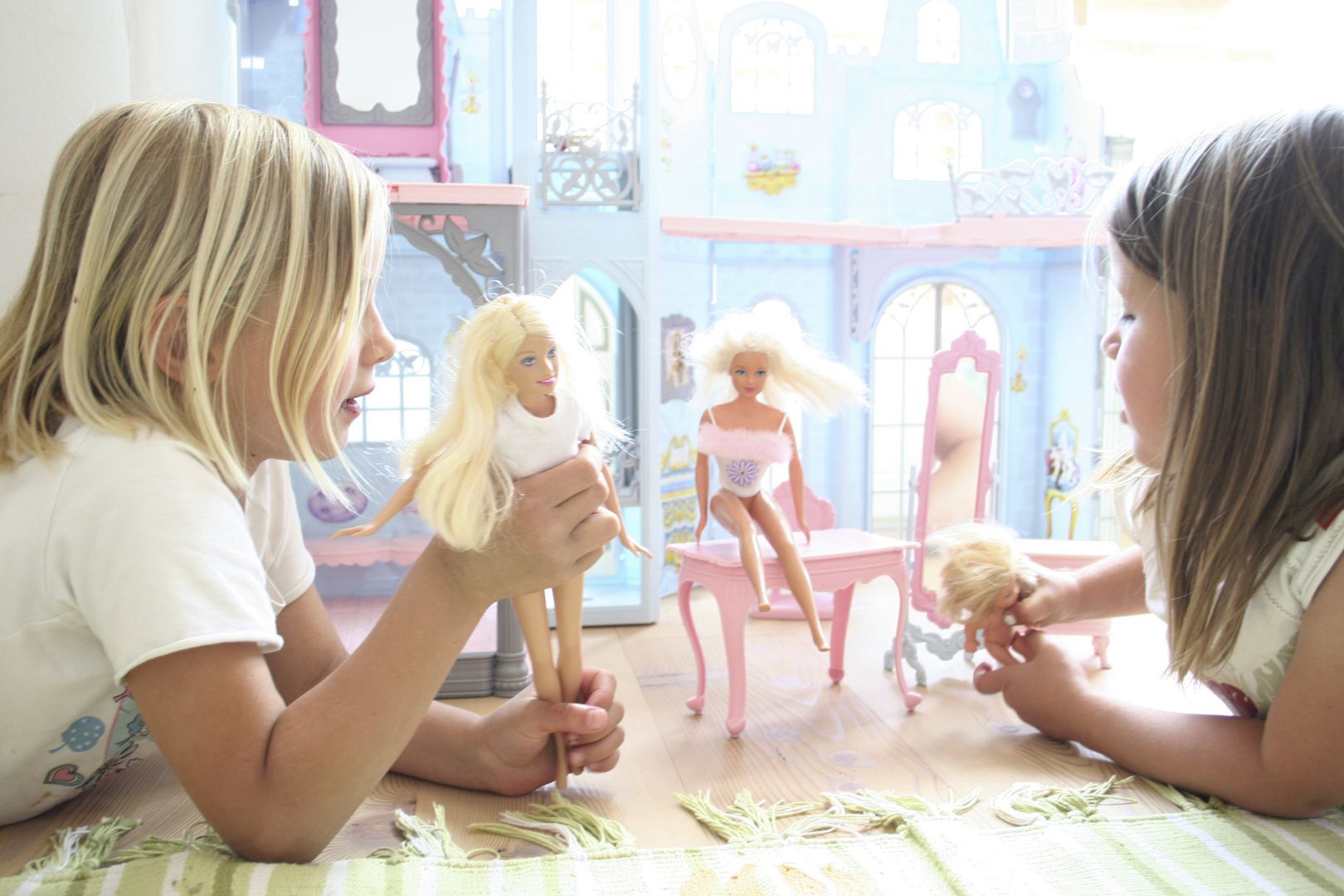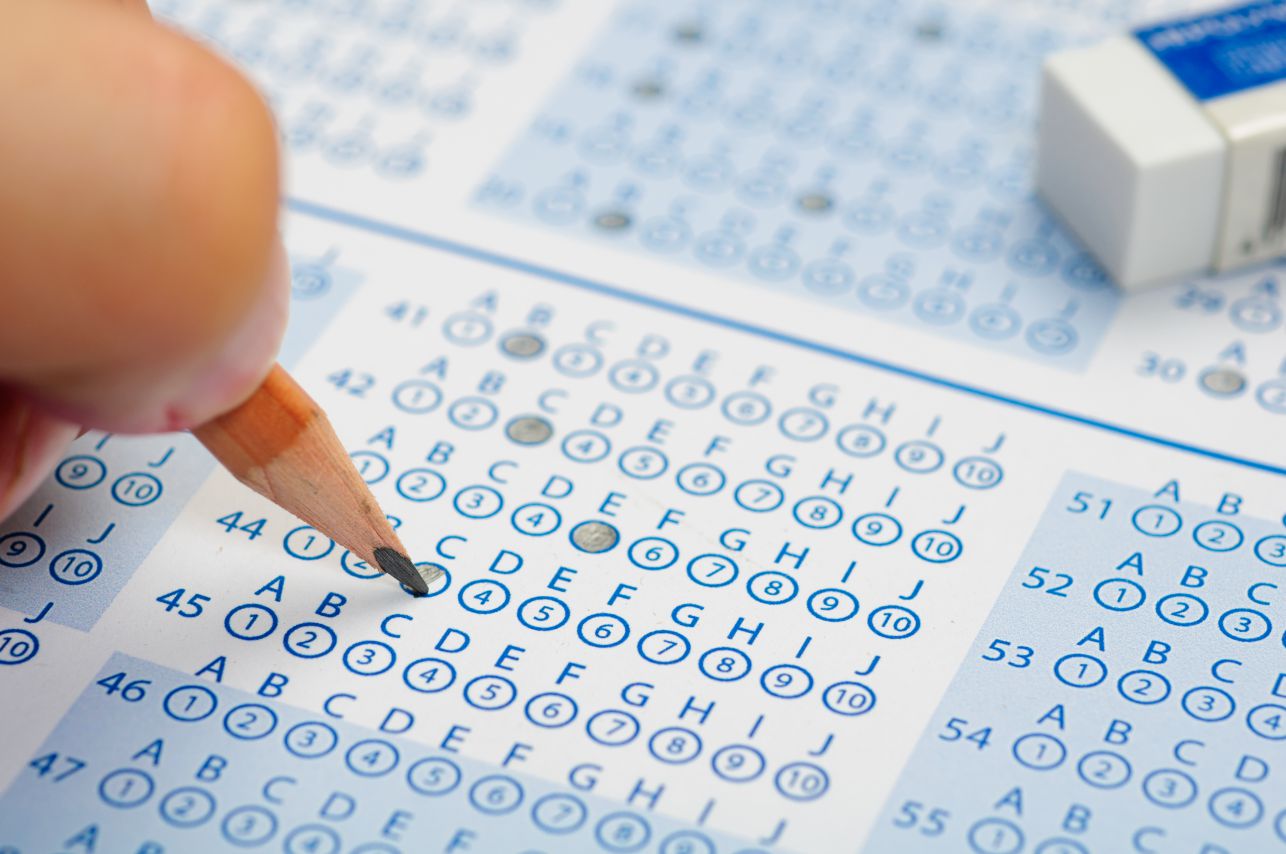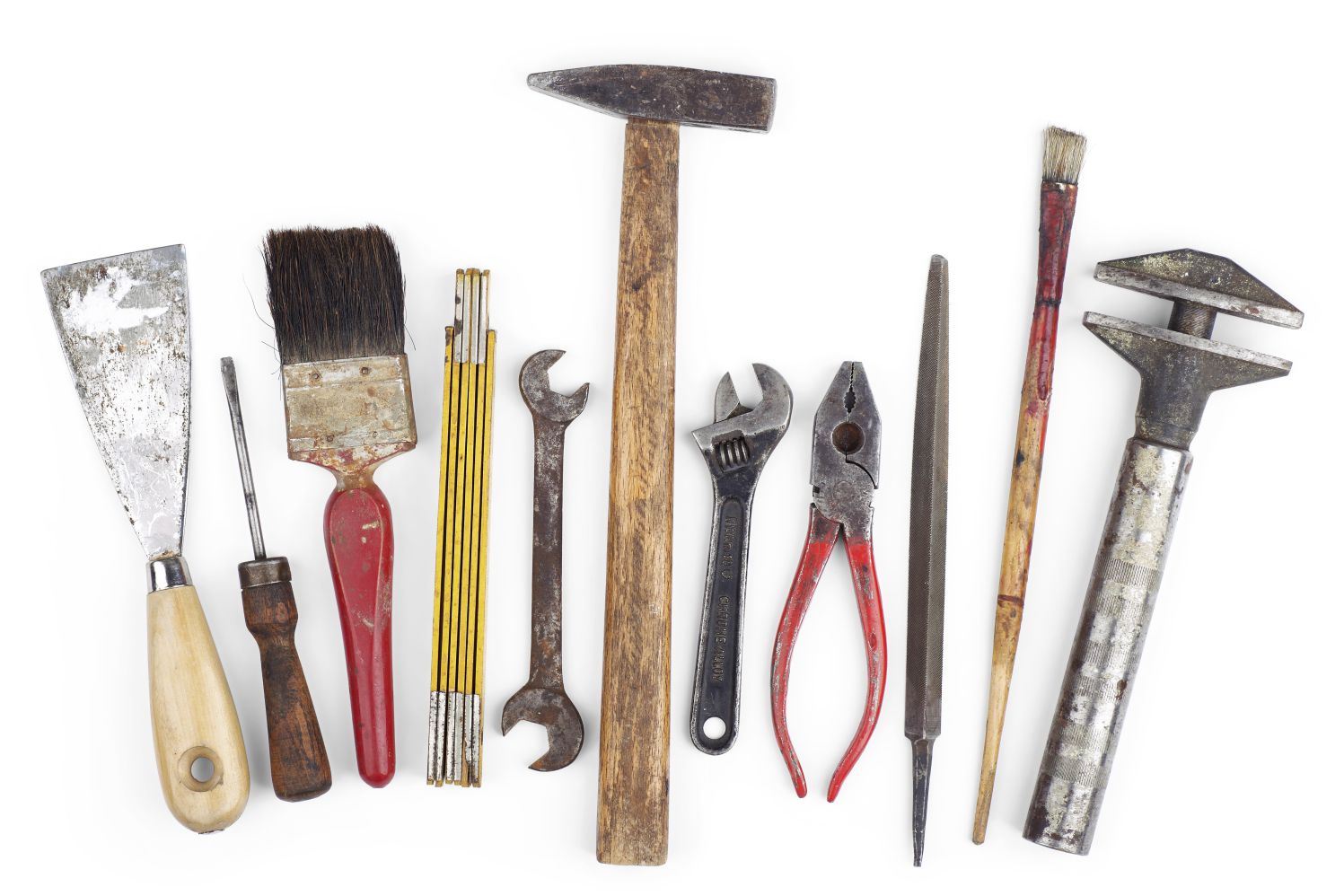Chapter 1. Dressing for Distress?
Introduction
Multigroup Design
In this activity, you will create a multigroup design in order to test the impact of different body shapes of dolls on body dissatisfaction in girls.
Dr. Melanie Maggard
Dr. Natalie J. Ciarocco, Monmouth University
Dr. David B. Strohmetz, University of West Florida
Dr. Gary W. Lewandowski, Jr., Monmouth University
Something to Think About...

Scenario: We are constantly exposed to images of unhealthily thin people in the media, through advertisements, film, magazines, and online. These images, whether real or fictional, demonstrate the value our culture places on thinness. Being thin is equated with being beautiful and popular, attributes that girls, in particular, are taught to start valuing at a very young age. Even the toys girls are given—such as dolls with unnaturally thin or unrealistic body types—communicate a cultural pressure to be thin.
Something to Think About...

When girls are taught to compare themselves with others, they might begin to believe that, unlike the celebrities they see on TV or the dolls they play with, they are not thin or pretty enough. How might constant exposure to messages about the “thin ideal” influence young girls? Could dolls with unrealistic body proportions influence how satisfied or dissatisfied girls are with their own bodies? It might be possible that a short amount of time spent playing with these dolls is all that is needed for unrealistic body images to impact how girls view their bodies.
Our Research Question

Based on your experiences with or knowledge of dolls that portray an unrealistic body type, you can develop a research study that examines their impact on body dissatisfaction. But first, you will need a framework to help you explore this topic. Research studies all start with a question, so here is your chance to ask one of your own.
Question 1.1
EXCFWbX96i2Ky/J/JRfqiJgcKgDQqkCMKQJSmETNM8QnPjQ1iZ5mTImLt0pwDIIsVi7czOFvuAQ1xYbHc2Ioh6Cao+945TbTIomZdVbRgukrAJQvk7N0kFnhLRPP7mORr0kzAeK/HtPx8XSEWt4AsTwIByNgCtmGOB0FOgqYQuofSb+83/hDB4IgPwr4dQ+mTtXi+YjFUgVXimGR1KVaN7JFvCzoJxId0ozzEtkaAUTFfC5jd3tSjIbcoMjSLhM229b5Ei1oBIyEwYtOm1BgtBiJs4744chtuZ012ysrW0jiYUbpyI0TeCx6MLdz0odQ91zixiSR2C5L1Y4347TdH/sBT4U+KOCkYeZ/PbVieK7VOxYtiXA+m3Dv8j+dibv5pSuEOypi30xSjkfDb6Mza7txVdJEBKCwLuEeQ3rDCwJyzksGJrmLGWKfSgCJTDd8n5QVLtNXy+toeodPFY140B3Jmzw7ajuN4RZKa1BmPmtkXtCFX+aylppEw71qxm3aPqaDJQVX4UV0ZwZnljPAe9KrIIy1DxT1Abr5dqnl2q6IaBA1+Q2rJfHNygbfFvUBRBw4b6tiTxpRvXtR4Y/E9HzDC17zRd1lcvgUXn94TO//HvJyAsSoWj5fNWdZMYq5Q+Rp94MswXfgCjsVLWvneGPgVfakaJgJfgNXw4lgPpM1cJJuyCyZ3ZEtzj2Ec7h6ICSK6VrO5UWSLMlBvoN8dRM4buh4WNhcQPUE7Uwa8XfVFkGoHqQ0GHvbPQ7DYE2fMo8ZKLSq4IfgUn/TlRyv5wGXB3BTpkgGzE44RpQAW1Dq0lMw/ERuUS1BUgIwmizHtj7HIuaOOqHMO0W5SawC68q+ZH4eSq+mpx8o+yR7Bvc0Xxo31ZoljRhBHBIFuHFMZeqPHT+PpL2mzLu970/Ekwr2RKkycXW3cMMxyrYgPfy31C00jix19VXLr0YnO+x++SMLYMi5e8NPpHfWrjMghE6MAo4DL+O8CP/PrYTlAP2vaYrXmIOtTqCF+cra2BFOKnqq6ZS4c9HgcQZ+RwFpgy0FO7NvKOPyZQIPuc8SDoA8iACpcWT0flygtYX2WEKzoMtrJIfrF9WL/nXYgtU9E7BDnMAnDYcTPicking the Best Design

Now that you have a research question (“Does exposure to dolls with unrealistically thin body proportions lead to greater body dissatisfaction in girls?”), you must determine which type of research design will best answer your research question. To narrow things down, consider the following:
Nonexperimental Design
Experimental Design
Question
COmJKD03Nr1R/C5tVHAC8qca9fI2X2igYaWOIMcsn9nm4OCbQANfgx15nYfZUmvUVdx/Eg8b9wAFBZod+CjY+IZqgR1htzz6Z9xyJl2/H9LPf5E7JjcIOg3USHvfhD8rXUP4wlgstzp7vB187EUoqfIvcxnrahL5jyo7fR1sZqbLAs7lRascbf/IhtHr2dUoMBHOELxfttNBVKIHI6AmFqSIBjjNYZEEiEDdrY1NWXxTeFvbBcKypqCDLdq163kGnRWS/CEISjdzq6YBFQrXogrwQpkPxXloym0KFnptW3uFvWwQKojUGpjj0yZCb5yNwTEi10NqKQixw5glIUK8PfxralLw81auQQ7NVwwJhnACExDZYvst+R7RMoJQvDvflvFkS9BudlNGP+SuXomT14dNrThytogdhFOVVNLB5xM4INoeifJBgwdaDYD4+QVmT9H5tIcqWeERDlgGF6CCjqz6y5lN4SIv88S3oMBYG3V2AC3JwdUBpOgvguwCe4FoqM4epeDYErWaqlrki4jt6wR7E4Bg0Xu7sLwdA5VvmhKRJ8mIfj2KwqNCvDOMepdPrDQQa9aI+IwrUkXEHlAUrjZkbRzxrO9eBgdz3jcB5Hpi2vvWOTOAoSRuSmPd0JqCiIJeTykiRL7q76ZxYh+ikQW30mzcqGtUrku3G1MHtWJVBMoVC5Li1rEpNMUqVkEBGXQ4S5vPXnYSMPsOfVrqgbWhhqe9nDOPzplDi/1vFlXUjJyQ6NAbwXe6wk9aZhvBoHHWRlmeYQY7FJn3RsGBRqQfeqTPwTv8rMD05objKzPNaXU7Ld9OmqTfdvPCwWvOb3qemhtQKjqQi3UcUZrBrL9hye3HDM0yBykm759yzV9RKbcMgtJ7lfRUZn8=Picking the Best Design

Having realized that your research question requires a comparison between groups, you must determine the best comparison to make.
Question
mvWq2+ShXCMcvY+abDfy/CchCcqfNRk7bdCgYge5fMVuLJoBqy7OIPgSRuBXNXFEVCxDWNEVahOW/YksLC5tVIYJkEBwEnqwU/vwh/3JMhI7zMufIrbERJWPnhtxYj/7eQua0TmX2jGb7wYDtaxSfEZSp65Em/lRXCTpdnLjQ3ES2eZFL7v/2/hUNyR2JHfzFHAedl/bVvb5P9ulSg2EPhAnPjuxIS5K4UgzgQiEvn2O5wXH2+Nq3dcSOlTEiVLmV3++ZCLQl80ZJ6paSnD0XngDHL34zy1Rw/EJQi5jpidJHJ80CFf81F0ykMl8Yi4sYX8tJ5Ndmrp8wa4TfVk5IlpmDIkehu7xn6U2iBI46vfnr762KN28tvdjGEJhTrtx54OeQvFnZQlQEDN/WoupbwaRnop9S2A0nrl5qBsHfdgeWCa+eUJzqW7nY/sN5rHXwT+BBQOyEAKUCqcQyLkXqkMvcQ8Qlu8anlW6KBloETrXFN4yUApD03qvfS4MDWCMjvJowzbhGvog+AhmmCyyVECL9tSAgVwfhLPgBqW3yuFowapx+66DbYn1URgc9rgYd8mpoqDfYxLi6QGSmGm2EWXo6O3gdOXRpIkviJsX5mJQyURFH6i8tmNqb/eMxoUFsZCa9wQzcJ3guYAMEXNZwBQF4L43YaD32coD92dwBosjxNSqGVP4REoUn4ts0i7ex01dksJOi62r9A1BkwYIyK9vXjcH/6ounGKXWolPnTXjRqcBwxP7+UNTlTF7iJBwv3g7eF3Skm/kHf82V5HhjlTk0HwsL0q7iMve43xlDtzmL09IDlfWvxxSvb5uJPB6CGFgc8fYni9JHGYApNDqSk8r5p9PNUqilTf7dkIJ/mtCDN8vDqQQ/Rp31G1dwBCMdwY3YOf5PcflQpERZHExsbVdw76qU4gI1qtEh4MRv0SFCVpbmVrxUXNcHXkydeWhuNQp67IflmHVwh6VokVhJrbwDV5bygU2grOq6NtFiIoXNGuyICMFk6Meo4ag56XX/C5iZTmlz54WE4XvGmu87ei1klgxW3/P+nDtQkoD09uD4H4odKJcIK8EivIWq+aDU/sJQmujooMvYsOvFrMcyP++OWwUdR9FQtKXeYsun/G4JsIq6C3ToQpcuR+by5GMGD2fpwUnm+FhWltpZkPoCv/VRPtka8rLZz65RlhAkvGkPx9gyPzcGBJchHNBZpdWW/zCA2QLT8WJKeyZQTx90s3T9cex97elqD5FuQTTK+A1zeP88+TkKjH/kuw3vW04MxPWpd5h0Dn+A+tb1jqhYoTt6nXH4ComIud2hfuGv1XuESOshLa0mNc/AThFOMLtg3Of1/82BB+K8h0Pmp558zyEK2A88PPKs8WjghsxeLExL83waoq4OHHTvkKXh/Iny/ZlsjsYBb4BiQeL1pt1lra27OsowV9F/G8qrVzHyRNIUl7MVdxT1T1kWTdJ9NcVatNhgrBl8SpGyxj6ZHD9v6hLXHfEYcP99ylqn0SgbX8JPhQr2PAF2annlQHfCLEHowSLmKRw4qU0PruD5VcQcY0CGuVrnyxhOxvupkGWriwRHh+l9B1xVs6ymLIUo6BcMI9htvTgrti8LLHVAvAEqIRUi3ZUJy+3orlNYK/CjPrF6HXK9Hs1TBpz108EUjJYSRVJaw==Picking the Best Design

Now that you know you have an experimental design that compares exposure to unrealistically thin dolls, more realistically proportioned dolls, and no dolls, you can identify your independent and dependent variables.
Independent Variable (IV)
Dependent Variable (DV)
Question 1.2
TN1/q57ymU0O8APYCQjTUuIIWu4MHn84cmNL+YHqZKtsZfwWVexWlzY/wrSzGwhpKfSzeV+GeXb7oBVlJ/sAvh4KcxkkcrdJepd06YspIezbcYt7mFXZzC0RRzHeRC8Y38PT5+qJrYVKWahgDXYiguw7JR8y5XX6np/AzMzv4UDmtNxMvSdmzy80hpNTJ/Si3WSwflG8h23uqk2Rxn+fC3vwnnCGTJ077CwiQwQSfkIgYTqjBLng2Mgw8XsdnG+BqwZ1v3iFf2QB7exTN9yOrqZu+5KRhqjpjePFPZClm2lJJ+X+3HHmHsxN8XsjRUANyqx4hp/lJEC3OGE79jjuRtAE772S65kWcbecnJ8Xf98dVqAz9RXpiQEGtCZU9KDrn7lIz3DCr1WQ5rYflWtC3VTUKXfiuKkHOshJuOTi7zOcHaH85S2TK61cKOjK4e5bGPOUcLpWsi858jKJJRet5AAZLO6cAyCXX/4WxK25l/qiMltBjq3Qy9xF4BaCaTXjgQttUb9wEZIehU1TT9dagKBdm55wkCjOM7WtabYs4TGjJbyoq7QXsinUXcGX3MFWKQAgN/l5pNLEyFol6QqaNUP0TkdjyFDYPS9kTPCRdCaqGNFo1JY2reAE0wYiAEyV0JfdnuVgUOK+kY3N2GwYizz+ycBFhdB0+JLMLsWLWk9+zCKrd+Tvo41fTpBzRWPc9dYuCz2v7+vyCDJMStq+QXrIbL442Z63oJ3ld2hlyQAjrgiMbjLqXkAu7OFgtDgdkVdgaD5oD5CYsL8T8ohU/29Xphzi+gMvWX86V4xcVBJKZVjLQSRzol69Q34YCMB6ViIDCvc02pyxu8kTaYPm1JOlF8g3lqqgGbZHXL7XPyjh2gbULNOF9r4nLPgHlZCKZACHtacvEy4neTj5+5X5kCVVfQYwj3bUtEJWi8eZr3y2bGg1Y2N1ahFkeLxpYbSq6dkmxvf7yQ5TbmKl5m9p0LlVpX9yLNTJUa3nBllRnVMNoQ2oXId7KmKaKDTovU3o6dDk4acL96RSpqUvNv/hyWYu3ompa9xa0wZuc5M3L1n7h7ReDPu/v8SWyLdSTTuGo4LPLEyDJMThGJcsBxLZgr3vxuK06Q35REVrXYNdqfkYCXWcODtP/nmXZOlotlZvGWK89VAYDVazFRd05YQzJtyBqAkbUAlezYSDTqjJm3o5dos2XJQTEd3QSKLpnZZaPGefrrLDc4+5olIldeUv0BwqzZM=Picking the Best Design

Question 1.3
HGc7I8HsdLfnaNmFXf3CaqP1PxWRWJMOmundP7FZnjGvEQiy43sOqftPUG/WIkKWC/4lGhDvZeWPfAbLYTce6iuI90uhHJ81MdEBwsMKYlZYtiDmq0FEUOCzOYAcJNAtgWcqnha8GhehXepmtwaVqd73Wwcanzhz64hOFZWDiPOhK+q32dqHU1COh4ENfxV0zNzBFLuEovuDiWzZaWzA77R6psfA5yZkcjjQLKaEdfP/ZLtzRV2nngrvXi30SuixloEWpPxZ02m8zP01xOuv8DcSejABpHpwBvV8TwB8ceRVpoSKTAjabtk02xeyDFuAzcdxc7x6zP1+GUC/EMmE+YZYbRCMdFO0ELz8YvME5MyCejExG2AZFAyVr8kEAMT0ni5O6uAZ7cGGdLyn0OJKamfcfX5F7x4dr2JDkNRTkouRv0T2i+FoD7QQbg0LfLf8P1ht+gIoA7Sl3HVkCxukG7SH8ENlBzdzacQyx1GIS5JxYh0Vhde/MokiVrlNmr3OMmpWuMeBVK1kJLRmz/3/o3v5CUqkqXsDDG36X9fUk4CC5DVI+dJvdRAlYRh3P4UWVfzpk8lDd1jk07DsQrnMALyLIqTnAHvwqWHqSlChov+/jZWNNQzAxYFrmZtmhYQ7hZY8K9rfybURsAH9OAnMm7JbBNFdAdH42ss8Ajd5ICjUXXDmeT96GOY4qIniTzUCHRYirwo1i8x0qzIT2dtF4/+DL/Yna3A+PpnSVE0fMPBcyklYpQWkGHI6O7RlhHLbPqJcExbN+GNo8snZ8JFTRVUzqZcv0lK6rXBY/Vjk8CJcNLi7RyJCoxuYj1nUE6TJw1v2NBcsMZ/BJZMZIxQwY2RR5nxassQChKhWbnM+e60rkpGud9UFzYSg05J7n0i044OdH9V3+eGqme7VN27PeKI2yucAr36IPkatlRN7Al9OWtgJ27+J551vdQMGGm/otFtECABgGFOf7v2VknGKex8MeTMRttG8PFC6c8De8LY1oAKvyj/1WcXGgbBJZcHXIvovjKjyl3A=Identifying Groups
Because you have an experiment with 1 independent variable and 3 levels (unrealistically thin dolls vs. realistically proportioned dolls vs. no dolls), you have a multigroup design, or experiment with 3 or more groups. Next, we should identify the experimental and control groups.
Experimental Group
Control Group
Empty Control Group
Question 1.4
0Acb71hAk6Knuhh0z701gV/vWLb57bovkXeQxgTAapb4JhV/ck9jQCsIskIklzIIWjOQ24XX/8u7wGnba7uphSEvwMh6to2uivo7gnT8ccXbIS7a5UG33kwbBsxicTvXKGgm1RkJz29vP0h2vlZSwAwW8uVeHrsJCRFx8pyLG4qWTCerEGZjRJEDZwNSBasrcijwUu/PS4geWHkQaWnV/U+ccvP+Pj8QTk2VKKRIVznVWdNzlQaXeBBhcnvz42NRNIiVDja/HNm6c5/ZjgDYZMRLf8lltOumhyqNkQpaBpI8vpDfNqtjLHz2eC7eYv5xIwqnG4UcfiicnAxQhoOSQvmKbaFHBKW2CdeQcyS6Ld4/yBbqjWq7CkJ6Ayk15/e/C5nhzagaP/c2yLN0xb8aRV1HTSvn2haTDfX3nj/zPT1LxgKUiX0XFnOGwPly2/nt3g6UxB26Z21S1T2MbDbXX2afmfZ2XJk3mU9aXwZf1HXbUpJYfpWNHcfN9FCZVkTU8rgl0ja4+aPouPI3XDiH4Jv9VVfDiEbhlOddvl1k2Gr7VbQB4mULp2+vbBW9srLnz7LG69lmkCsFIG1LiAeo/sMC5il1dPmTuhoZinbvJXH2Ig/dpeWAp9c6sGY3Cf5KHpxg5vOwz+LgqIrnlrqjyUxC2Zt6jpXpKPwbDTMULLO53Bjoqmllr6lbWWoAELbZf1LqkjxprYjFdEo59UDYrBpflY4a4ZE+mHBkmwBto5pUz7IEGW/XVRa0HHJQ0J/kBkOLk3AXF+bo3Hp37joXEEhOp3D50HvVbnYuRPZNIQcdNb6S1uuDFJmsqu/sbnGoi945b5E9+E+IWsbc/LWLQngcuhvCVdHxJ6gswEbpmnKxTq80ltrNaBu26vLJMwdwOwMuoVeLu/AxyPng9ZocbXhQUVy92liaqiElxYyAbS7B8rHGeq6zm7zCTgdLqfVQxFCezHfIuFB3tIyIh37/L6DB9inYqaDp61tQDC7oxjatjJvlDXXY8MHIwiSSuJdT3/AKHWSabDUx9OMbDxhj5rRuGtB35oFIAKUMLnJm/5tJahXASCxib6BJu5+cqwY+Mp+Lga6JPktnXLmY2xl6l4WtCtvNAhGD6/2dHXQKWhts9xjQStyCX7lnFlXLFKly5YtQzEXF0NkNcDQ21hkviMwP2Zmry8zslpjBdHLm1v8/H+OHZzZgJm6yshjdGbqVQ1GFqA==Operationally Defining the Independent Variable
Next, we need to operationally define the independent variable (IV) of doll type by determining exactly how we will manipulate it. We will want to be sure that our study has a high level of experimental and mundane realism.
Experimental Realism
Mundane Realism
Question
ZtP4hYgCXlJU3qKJdMFES8sNoOHhSPGfn1FswphCKm2cDg2o5YMVQe2iKjEcRaA4UFN7idhD90jF2F3UqVI/CQ8htGxdeD/inaqNuKT6QIar397t1xTyCm7zpbXz7WeQFUsxYyjFUL+2GvxEJ1eyWokh1tQoSSqDlCS6Y0h/CxTZGnNL7qFNi2eCZgR8dyDpgM4KQxp26gEspA5ITLyVt+tmu3ZaaGrRK6hMvzle0FsjPtLwozstIr8/DyAL/ALpEzdr7dQ6zW2Bl3qi8atdnS9N2pflIaSSjJmWc3bEhexZg5ExAxKC0+W7ON5Ywlj6oGTbz26u9NhOvHcsPNBVBeBkWEtzFv0DsJs0WEak2BTNInT3SZzzPBgt5/KZb84Ck80aVh4qFKgZ2soJEnQk5SFileWqbCX3tlWKKASy6Ah27/1lHi5Q1mJqMaYnCNzUb8fyy/vpZOC2x6WneJlRnn5Cbd/P+0K2NELjuToWA08dUPSngm7n0SiPBDaN25G+KIl+WZA6W5EaoFubZInAs86aXDX3zqBBsHRi6Y3ikxL0HH4GGJx2epLtF9xi7ZwvzeSJw2yq3z0RrZ+wYEIftKOwOcym1z4lKYSvNujCnAdtKOXAHYw/AdtrVuK1ZQn88h7sRWhxMy2n9GVV/9QSQ77/y0VtVy9O2gx9eCn04U8n4eQRCQwXdsr/p/jeXpGmSfuyasFLoxmfzKEASDcZ7XQIdSYyUtPeW88uuGYEXexCxlgTNVuoHSqFaW9SF9RCCA4vnHi5Vcb8jQmxupPJNJ8B0yAeYiWKmhRnjNtXHYXJ401ORvzU484cRnIyW160n1w+G7yVffwFQvjNGG/GNNYEyPMdtPzANtvxXTUCg2ZF0WIyL6UBheMuYVXiKfa9OysV/CjF2baZSw8hMKwomEoO7miuG4h6KCuDr6Nvs12qz12D2yLLkmLd+66FjSkg9cPRfxcbs7K3wrG5G//89xS/VQJUHVUO1VHQtxkqvqn6UXJD+iw5fyIdtIRPhxhVz5JbYarE61/ywq2xSxkFjkf2TuaxYAi131wA+PBFMAeEYeafkBAgOqJT288sHVzFexjahmzk9WNRqncDk+oskv0+yyn0EEWVGo4aUINlV3Es6RKY/EGQ5YzaqwCiPBdeGEe9D9mp3kHctnFXEw0VkKtJy+19bR3/XHXqTIB4akkFOr4kK09Lg/BeD96zbc6Pp2pT1URVr3ZDAUkoGyMlj55Lxs80bQ1DdWz0rrDUICQC0MJ491JcsNmnvOffuYhHY7gzYANMClS/Iu+pKTyD4yqJ1XoerOZ/rV4OtkbKzL5iidWJmb+prNRfTbkAAVELwcjPCDoRZQyDhSFqy8njZrTkYUPRAfsL6VGgMttOqvnre1zX6hi3FU1ADmSlt23PK/R9l1Nm7aa2W6eDh58DcyJvxYahzxKNv61BiUIeYGqdYdWXILtTz/ppaK6MGjRMQxMJwygpgBC31FJxPzw+xHkHd4eJD0KAUug3TKVohvQSyi8KHictjYIf+sKGL5sd+Riu2ELsW1/HfgT+ggkAlgk5PqO5SyjAOperationally Defining the Independent Variable
Question
/JlgSGWN6eZgeWvrDLDnNBWiaP/GE8Y5Z2N5gHo5UeSjuLO+l2H/+spXfe3rsf1JvnxkIyy/OGxoKZAjohRY6Bj+ttIkTSzndQLjaQNVYZbG5To0TtYJdOGbKNVZ+p3ci2BSC7a7mG2hkbun9H1v0ZIGmf1ihyzZ7v91M1KotYneeXgz9mheniQNw/iZFCjZoKYBAxlnECPck/huRj+UU21dEn0Zj67IzYhRrNcMiW8eqdcDFpSbbfblNIm6spZ65613wjPS5o/ttlOYKViZo7KStFr/3CM/3srkgH//lPPDDCBXoqi5rI2HVeQeMBHluB87cPAsoKTAJBkBnGSD/EcpPoNwooj2a5jLzTm5dcb/pralioJaRbvVMct21C7OP0YlwonjKOwtTUwmObmLkNzd/h3EeQs2fovRnoLJsnS0J8UfXTeppAGr3VFOZnbmakQKeFMlbPd616VUZryCFfVAlQ8i4O+mvqY9xvCMCMMSvrpMnr9pFCrkSJY0X5sa7CTHCG8glHb5KZDdpdE+T28ISNy/7T/tohEHZWgDNMDDIIYZC6aOzvVB3tI0ot6Ppjj15PQsmcN5wWtlaWqFTy3T++fNCsuLqTKUwppGaRh9EVwsCu3+Y4Npz2vt+PofGZFEgeB+Vnhw1dq03u+NAvABRh9JdX9GfaNuJaPHtwZOelsTs9Dm2WQ0cxu8d7E4YGlvB21wI/pu+Ly/EMg4djIuhinF9/exEs3R2DpTDA6NpCJFk7ViA9NtOO9I/csR2kUdOPBTawyoSKnNxwyuAhYXPX/0SHAOD+5ozB+5AGMbtMa93jh3JoSopmkbta92z5v/ZjN/HkF29EHvgfDEDlNGsUi5rVQjMx4xCfhv+He+MldGCA1gTNR2LomjxofaOvR/pZLIYMQlf63GlfRKYTbOePMtkBXzTBPiTgt2q9fDWSthpEZ7IePptVlQZPfbmg0mAn+reZh2HXBDfSRZejFQKz4SE7frxqMJszwP3VNS1SwduKmFUgSP8ZzcfGTC1sXAxYczLeXscmS0Rz8SqwMjrGAWu5+SoF9c5b5EA7CHzgdBOSDQk1v6DMZpK2sMjiSSHhFSLBxwl9kf9TcG/00/jpr1A4Xynn+GRgkwt2zOfx6AckGJqK6csZJrpkMyw43tja6qkfk3oDkyjwWQpr22bYo7/IkWpjC97XfZ6NO1fgGmAUmI4nBmW+nmVL7ySCKbFOEIMLePslcaqdOPF0/qTcE=Operationally Defining the Independent Variable
It looks like the task that is highest in both experimental and mundane realism involves girls playing with virtual dolls that they are allowed to dress with various outfits and accessories. We know that our experimental group will receive the treatment we are interested in (i.e., the opportunity to dress the unrealistically thin dolls), so now we need to define our control group, keeping in mind the need to maintain experimental control.
Experimental Control
Question 1.5
Typex7NMcmTT1SmjEx+wYpKwc7u8TdkVmSnRcOzPIAXCzW37P6UD/7pN6FMsnO1cBlCURqrsbEE4XG+/n2QUKw/CIKIJDvQGMboNmDyOZPXRY7Urdwtt2gSreMJ7Kzp7oMuSpX1wBLCKSwNd7grIugtdbD5M9duuE/ryC6ecvYlf/f61Te8yRD+4T0w5pI2koT1OG1Y6b8OGeStSFqfMt5pKvKywgPzHS9uzPP6kYXitdtanjMv4kJFM0Nk9KiUYYjEwCaXFm/VeVBi6/+9Fj5H9xpDA1JCzWxVl1zGK0h0I7CD/u4mfmcnzJGl1VXz+hWYJx63yeyl3jqXMMPjeI8HRcfRsU5muv/v8ByRY6bmt9YMhxMVcMvl2JyHIa++QrXkRBpACSz3S63v+4XVMKn0M7JvGIzMEY/zfHrHrkUw701waW5i7eOonBH4Zt+GW1QACT/HtZ9qcxPj42D8WFSGs/ZclcNabKn6WZmQy0texr2e5GZiq7DLdKJDckPXryCENEUpvF3E+zWPE0RjbtzQNZV3k8NMCEy55PQwr0CRNxz9oEnpAN1Ap40p1zTpplenBwQxZx0BCpGic5F2W/2/99BCg3uupJdy7CsfHPyUBcJQY432V5lF7ObGlhktOYiHBObDLMt+7HM+/UNIC9k8a1rEw9EFXe5SFaSaL4VIGtMkHvk4yGcHpCfENpUxlneCkdJamaDK2bI9PxUbwBYXC82ZOnwytgAbcSrQ+YxjuDKiuqSexp8X7Et67slz1rIPLEI0CBZrTbbbWz3jR80/FFiJsnCWn4usoWh8tARhy6Hol8JD4QzUghVwnFArf8cysve61ry+xwM9n5x2XNPTaLKiVW3+rdjraUbedLxT9T6439w/NukSkOe7mlRbOeVNwe3VAqsS3BVyCFGW/stQwjh2kW/GSHjUA64sfg1Eroos8Hg5khFQOj44YOBwiHRa6hUcthHrnSc+7XG2wgcU7eXg+KEFteaF6wwPcPJYPaR8Oy80fFrNWEeyqf7e0FEag3ApH2mfBVMSgUbwNux49yDiSssbbzkjRw38i1U/d6iOXuOD8O02/luzEPTGT7rLWZ8Y4IL1v/ugcjVoiA5u5IedDbytKy6/S1bJRzOd3/p18mYGYiQ/H/wIRl5nTsBnQ3iDZMi6ylVwgVgZ3rTDLWzdz8bERZ3veRQ9fdBXLl+Y1hAw+H/KXzv0EN5tYB7GyMT1cN5Tx4YNnUYd71u2IKMKGTPP5xl9hk0DdC1cFkswghh5ve0SY0d5mi7h/s3iWPK6xKaANuUIf9TfxDI2CNUfUR3KQRaedA0n2FEVX6dT9LVT3dIcsHp/m3ZbMAnrL2DA/npwzSpoNFTxfJogD2qGuujYslHbTax/46MRcrUyKeLBuqGz4JlKi8hzgIHsE6MOrxzhzrbsa9/3gxSpJaMeGwKR/NS0yMuUEO/S6FUfgZ5truuovd6RpNsRViLDApsaq2lOSVDXytUlOUnq8oZnVchoRnVgZbULQK8ztdSzlEjQ2mKb8DoeMwJaU+N+fIleahjbHpJTkEn4+5vgg0U56OT8CPPNaOfVfOLo++e7hoNjDpjNSXqLKtfHK2H5gdqgvKnv54EnNVpv2N1k/7O+FAhxi/GdKJx1spBwb3wiVHLkY8ssQPcjdcA4xV8sgTeIWPexZsX1rD0by5vN3ZTLTFiRjfmhnzxJM3dUxksLOIzfc4Or7s4ZCqV+gYJdn3JD7at3ubx9WYOI2p9VX2BWxsyajdwyUB+fF9vUaMTCBEav9vmvr3xphWGkn4oaAYk3Uu2jg2HLkdH+c88YfN3gu3W8LPdxrlKW28OnprrBS0NDSv7tBZe/RPQseEV+0kRMbRc+Gg390FnnL3hj5Tex1f6lWl+LgQ5X/jR+ikRPlCXgUrhp0ndoknCv8dZodts3pztqu5UnZHIa1CtySxPcnV3juR24FBQy7M+ZNQocS1z8ESRgDQ92jt+Io77YqceGCTy9n3qWG48OVqB8f6VHF/i6GRYXeDacS+mJx2GO1S8dv9zgQpC/f2TOFKf0/OsBUjOTJ8eK008W2gFydbe9zGrM8JD79rm/Bn+cAxHRnEr+JM+neQkfzg31+mmhnSSLpxCY=Operationally Defining the Dependent Variable
You have now established the key comparison between the unrealistically thin dolls vs. realistically proportioned dolls vs. no dolls groups. Next, we need to specify the exact nature of our dependent variable, “body dissatisfaction,” using either a self-report measure or a behavioral measure.
Self-report Measure
Behavioral Measure
Question
ULm/SRrhNT5lr/fCIxkBlbAV0vaDoZCQudyHKmO/fzNpSSFNpsO1PoZksfBtG0Z6FmeXs24LfMOhcNBbxZknlAgH/MeZDm/2y5m6teGD8J1/7lEfTQEya4XMqZK9lVeYhay06Be3z6xNz3ktqajY22fEpAOQjaKcILm0oJRYpQUm/HUh9KCWvt3iCZZTXusHqAqWYQbsDWx5xNSwDeJR14aEQlBNV61sYSEtIlnhbgnNsWpBAV3viMq6gYgOabcGQD/BCfZfPK7TTjFUzWILFlC/SnHR41ISDyP/E18gCdYXJHxqNp3VAvRoqYJDBn0Uk0bIjnZTOC1EhX/oKfB8k/7Fmnm6y2QQh6XHrBzJpEef7/1tmyUEx7fLYBbWXIHnejL8ZDFQS+ZMRDl7cvAnu9UR0cL2EE1KefjM6furM5DDdb93fOcv2b+TL6QSoryTOBjj7vk8wOTVkzH5uLGlwD/9Et7+n6KHc0l00dwMcNZxHniR6QFt2kGuDwewGHHFyWHKlQ0kydN6QTm2HBZ8hexgsnNursf97LUN4KI63DZyY0aViRh3YnOKLZROvLBsUxSHngvhf5qh5kZBhuUymPipTz50VcOJ01dvUpob3iGweNuA6Myk2tnSdFgEZal/f/2P0GYLDMvXjrrLaL4cWPGBX+gkXkopMnQPVRC8LK0=Choosing the Best Measure
We know we want to use self-report to measure body dissatisfaction. Now it is time to determine which type of self-report measure to use. Consider what could be the ideal number and types of questions, reliability and validity, sensitivity, and appropriateness of the measure for young girls.
Reliability
Validity
Sensitivity
Question 1.6
xbpmwTAlUuL4C++CTex3qxdPa7NkW1+Gff6rYJr2chx5wFR9ru/YUcFUIkUeYAlxdSpK6fW0dZfkC+nWqgv3fnPsdFjVek9kklmeEWp/+0Eo2ItQs+OplPfOXKNaYM769OQyRRCUv+hYROIYuPSvgKJIMBifAa4TFclEU2TYDmzpe3cB++W/fs0skYuYx7BwsP56ZGxWbs1S8ZRbP4rTs0sjhjRL7+P79H2IayVsmrzxjLNV8Tnc+vXXlhOpEthDerChB1SRS1P62R8AI2k8hg2y1EIG62efydJ852mPNM3bXz8OS46rA2goNevCOMwQbERYMMAPI2YbebI785s0AyhiEJzRY/V5+D75K4C64Su8MKn6Vq4P39M0Ob7iDU4LPiDO1mUT/vucB02VAMXhnJgp6qi848Yo1MpeVfvq5LgrqKZqsqbBeAX7yzkvqGlGw+qfxL5+x3AjXpEfat5coxkEGvLTe//LNClpUACl6HYfj5Mttq5lFae6rueN6+D9IASeSQI8MQmWG3Y394IdxyK6LfC/pu6e9KDfEDWCVAeDbpI7fnWXBqyXE8eLxHuSv0JYlW1KyvSsZ5RkN9uCg2tsvpZsmnA2hUSE5blr75C+W68ycdhkYZqTONiJYBd84sMv6fi3F2rSe7IEXXFF8By4E+6pP8rcpPAF4RVDePXsQbPm8mZop2E8RmdgPBEl+TdbvcSP5ybt+FfAJ/cuqYh74wYWybpPXYQ8TcuwX5j1QEXGDtTPuSh8eiAFFqAlfXO6vFmiLl/ddvIfJjmCrkdcTZ5jyAdcMTP7U12RZ8Y0eDJ0w4jYSdhg+Yd4uJglRgHvMIbhTIng2ry1oyMXmSsHhMYO6jS0V4WJjGn3aFmLBGJwIqx5g2Dpo2Ys581CfHB2uzzzEgsbqi5H58tvzQDNNJ7IEwGKi2/lENgTTXtnFxJoU44NdblyLUbNAcXcaUqSNEZ7ONNWCEHqCAPufVBo+1iI+VdTK7NgRn7tSxSQluAvUd41/fjgUED6sWsEnlZqM7hnFb8v9xghnftq2eb6ckxSim8NlO0i1s3vsNod+CXEdJHLRzDs9nT/EH+x/h+0mZAegw8JlcUZb6Q+oG9yRSbyz59tU+JNJNAYhnY9TOzKKJoB6EEoJUXpwEZlkcUIq7Jk4SwG896e7eqP1eg4jQigyKu6eFxZ8jIKG8KSCoFbnxggl0LaPsl7pUVsPLuAefyoHfC4kjzn5aPw+bh5WnunGCvJB9pEUX5+HM9q5LNn7/kEQW30PLgvvX+pcEINyQ42AYp/eMPBwkoX4iSeXtFE+7pxsZrG+vGKD9o804X9z3R/s2+ur4y7mHGK9lKZQ8mnec6BocyBoiOCiOnzsrwAipckMjczaGxOqhluJfjVcP1LMT5svw1E9jJ0VWGP4lC7YR7kTO7KPOVgIxhHnyi8Pjhe1PkiEjSyVOjMybENR2voRJ3+zlIHneTvQ3l471AtXSJtNJTuC+9qGmFLQQiB+uFhOsDPhCYS5kHFdKgxP90V/oUruGBjut7x2ooovhr/m+Bs0+mbzBjUiD+kr8tm4xdMw+TApS+ALn5rRTYpPf6UEOLSAU8rZax/u0mHpljdMAOdIZwQs7ppdpZx2XXVVe/jnvsRSOF7H593RKezLIeVe05pqoAHCfRfKtdEL02eLfTtzRC90R3A3LPJjr4i+eHcHQhlEg1rHoV65vTNtlCYbewUMVT7wZtLuqn8EUcNIkkhQiev0mrREp3kOWfWZ2XthloGG75mFer0uhJOKRS2xMhsWqcudqPFUWor+OcNmzXoZt0HsO6Ut+qtuN97rblLxwCrRRbGaNZPzT4GkTfxff1F1CdGLCGleojIwvFOry29Sel5Determining Your Hypothesis

Now that you have determined what you will manipulate and measure, you must formulate an experimental hypothesis.
Experimental Hypothesis
Question 1.7
O719BeNqHKxgiRHV/dHy6yw7I14Cx1+py8PxdpZmrsNLN5S+vFIwNp0iX1N6GFELvn+Xf5P/KNQMWte1KmMphmnsTeBc5Ho0qKw9StSWNsmtOTwPzcsO5c5BYecXiV0OBIZEAsMlE3/LtmJlXkeS2xXII7qFyFkxrltoPk8VAc2IZ+FynIUp1pooDXhc7CsqT7c2Z8KI77mygng9jagPQ6b7Rp5zhUQseQd2MfctFiWDL8f71SeLiGhUdKL4sghswewbDD+r+ettd/fktKhHHnzzR4XE3U2iWKpdQywgVcmG3BscJJZhjg2eC+lHfOqWPpxsgcraXNkndEyir6Uv1QNEtM42HRgdt1uMKVegwhc0uTleGuYerzFRUSKU/CPsvSO4nYXJSP12nzGDOXkVWJWjFDIsKYi12vJ+cXaDYAgz32PbNhnCgSF/py1lhBw2M5199oh9G/T3HDQKBCll1MrOoOczdwCI4q1g3rbCIioH9ciChgtFdDXS7WrQTljaHEbdu6gE51QDlRCxDxxNt1hoqTQJXCTQ2f6Oz5tosmhyNL8xeXBOseWIfJPbSacnt8BDaR/ESUwAKXUN0jYwZdNn16kCgR7rS6ixMawW0l7yqzYGRKeI0RmlAypTTrTmMLU0JnMmoIK06GyryU7mW7fZSK8TSQz7sJf+uGm+dG25Dk0OnHCHY11Dv/tjfx5wcTNGZ5CycBkkB3K86XmX11Zcn5hup8JVSNcIAcK4gTXP0FpqhlJ/TvOZrSXelgxo0oqb9Ym+wIeReaQ6Zo6fm5ymh86MFILVPxH/aBSiMDJWJ1EhStUOoZbGid2RliRXoI51Zrn/bgO3ed7MOUAh6sqJHx+N9HHgsM3MnO7AVy3VPavCqguZIxU+zJXBVNCT7F09Mpv9GMs9OeHYue1HGlPUxt9+fjRtHCoX4inzVaiFm6+JXFTwN4GSo8Eb1NavZM1w3XqR9hvUDfwcXpr+Lb7ShDaTcz6rcwflEktQvHLPAs1iA1B6DaVvmc/VhFAiQ2L8jntl9HkZKNgVHrqguEOt2pVMqGMUbQRXqtxIsIGSk+ezk2tbR5qWCcsSG6BFIfL0UMfF/STeL7/IPMHE0U+QG08BaBF8wt+qGUmr1YVrXJGlmneQPi/BpmBCq5a0FDN0Jq2nZvKqZvkuOiit1V5JqKPPWNU+1ciKahURTbV8rNpPa1yYAgCFj2UmttvbScx3UCA11IRenGOjf+Y3rbTmu+2/Oz+Wx24pIqsMNLg7ceEZI7i9+9wOgj6cWKrZDZhVGVILbngv8BHXyxHt4hG/kzUozLgmD1jqsMeF3r1yiO3nWir8xJKIeHAmee8ZjZKNG29TMUx4B8oB9DJ14eiM8vCs4cUq0lIy04VmqjxVPUOnxZ1sFPWX+nAhuR57KYRb/w6eiV6Xem7+4Khr5uAJYdPvqFmEnxTj6gIF/B/gC6QHWmrVdLwGrWD8oK19/Qx/0w==Finding a Sample

Before you can conduct your experiment, you need to determine exactly whom you want to study and where you can find this target sample.
Question 1.8
n5kAhZF+3/4roRGcYSRnKfMYTIK998Wmh/HNvM9WDxMmpsUl78hul0DuCY0lxIJdoAAgSQ6JOt2Hc51ilZ8h90EzV1ApteRFB7vEoL6zgwYlJEINAd6RqldmrNFc/LDdLBZLdFMbRGudurfY2dSsQwDwsj+MzBydLQRd45dndqqOr3NAYd9TnjbyPyM+fSd/rGPkWuDgrxxlB5A1euchfy/gI2ghL/hI4/pJnj8jdu8yLXovqn4yjgYj5bGt/Z50yf4KzemBjqqBGlJ49TjK/yj9o0TV1iDbNj4ZxD1RnBz/stdIcsfFQns5VJmZZdK3VDi6s97H5DyNET7fuerS7m5GYeyGpksLsZIjwW06oO7bfYSTkivUNaYsOCFK5V1rtV04dpI9g42SvOoVkdQ6b+Bt9HH0OeraykJZYyxxm/6X5HX8WthJ+1iAgcowsHBkygiMIJS/8znuSLLcowjGjE0uTERJ7hj2qe1SckaFUf+/CsfN5xgL2E8dstoWAl8lOKPnkdvYSMXHsEOLE5hC+WimKGn9albwJJLx/ySb/rVnL4yA/fQvKjPKn3NO46+7gqtCVGxfg1FVFtkAk+t/EE64/bQk1FBgUV+WZIypl72u+zUNrEHN9CvyTdy/pB21LR6qX3JhVnJulv4Q2UJbZTcmxoA3zHDmKr1YvNrGDyecME6OcqFjlklkNb8T1PPvHTwnSOsLKMoN9qkriwCH+adTlN5+onWuuW/FluwrRUjPvsC+dGzoMrRdFTuL57zHj2dVeKggnZUDlLCgNUrgSy4+4fjAI2579ycVVi/fIm7EnxSLjnRYMrPt/mIh3UHkp9q5I4iW5JizwqGMCV1p+GOrIKFr/wmYCaqsBiURvZMy38KLxTwoQTl/OVrWRfO+uKdlzyKGMYdYfZd0i5xsx+/cxgpWFpV6aVpdFoRmFCb8p4IVKwCj3yrufPdzLYYvEBKMLUoYtR2Y/1ZCBsBvf297SMvClSb3YaKEeVFECkE7wjeRuLj2m2qSzTMZRxFRVa+9xqcy4xGLi4nvfT8T06Etz/cC/zMt9Yymz9s/neTQbZ1sd8VlPl6Y1kt+CRNHJQ0KXcu9vGMVbaynjXGMcbeZsCLRvixwUHotvbE5WT+1HeLkrpY4loDrQE2Q94OXafoFzuL+xBQTugAHnWFZK8p+UsS9bWZpyCWg62B3JXpf3lSnzUxqK0+SKpNd38WyWwwigvAp53z1r5U24Oik/qxtnirCtXYrHgFxkvdpqMHWwpc7ducXWOhsFizoEGXHVk5Q6QopR1qQ3VfQi08VWgPcUv4ZZ+SDH3rzOIF9JpXYDrkFaYLK+1G2ZxDbGimP1qZWhUee5UD3DO7drKu3OvmWm21AyYeRwTfmxlRGJZDxjDe9ljNcsJgFyBd1qJj3IiarEUOhaafjOPBtk78eaPQlPJRJozahGjy/s6FMEFk2sU1ippToN0Jph+H/E6Kuk3U2I93KKBBNAMXlrvEB2ES2AmNZQKWq9zut0yBkG1LtIgRnDOSKM5s43PfrJY7eFvWFEGPglBwp96g1yHutosOz1K/TUBc1gKfpd+mSkduQcYYUMBiv1uiLeNkwHfvs2qXYndjZQV1Jnvg0i4usmFdfq4UOkRtLRE/ztBVht5uArhxvP3c8UgmcRQkMzCCxiE1fEBucc+4ZAaTSQ7cXWDpE0gH/1WF31VcDCc78d4eZjzWRfU0f8En+7XtRCjNKfTs2y/VB4holYixsA24JOVLWTZg=Submitting to the IRB

Now that you have determined how you will collect your data and your intended sample, you must submit your research procedure to the Institutional Review Board (IRB) for ethical approval. The IRB will determine whether or not your study meets all ethical guidelines.
Institutional Review Board (IRB)
Each IRB has its own protocol that conforms to the national standard when a researcher submits an application for proposed research. In addition to the appropriate paperwork and other information submitted to the IRB, the board considers the following description during their evaluation of your proposed experiment:
The purpose of this research is to determine whether exposure to unrealistically thin dolls leads to higher body dissatisfaction than does exposure to realistically proportioned or no dolls. To study this topic, 8- and 9-year-old girls from a local elementary school will be randomly assigned to an unrealistically thin dolls, realistically-proportioned dolls, or no dolls group. Those in the thin and realistic dolls groups will be presented with and allowed to dress virtual dolls with outfits and accessories for 5 minutes. Researchers will then measure all participants’ body dissatisfaction using a 2–3 minute self-report measure, the Body Parts Dissatisfaction Scale (BPDS).
Responding to the IRB

The IRB reviewed your submission and has one concern. Although the study appears to present minimal risk to participants, there is no mention of how informed consent or assent will be obtained for the children in the study.
You must now determine how to respond to the IRB, keeping in mind the ethics of surveying vulnerable populations such as children.
Question 1.9
qNnZHmgW4biLCSCW4BnR2aLa4mGKpDToIInSEz/fTZKydxfH5eIj++O7CPawV26DGinRQXQzaKHV1l5M520rNn3Ke8x47lECCQByfbvUb0vfje4jZdpTUE2JK9Eqtkqe0KHyySKCwD8Tr0WfZNPzf+QHnoWGxFBslJ0p/8dItbEfTbj0w14ZxjMK/wxrAwwHfRrECknx0e3Ssbl5Yu+siYw5SRobX8ibASExKsr+FG9U5IIRzgrbuejQbsmavqxO2pvo728LVYf9jkUQjnDZbm7s4pRRwkKKT0JEkbPWdrsTYudvJvPhneAVj7Ck4NGN93c6CZ9wENd+cDxDRuKAhUHOSpom8P+6bPYB0s16a5cfflYLfDnUlIRR/hQbSgJg1/LJid8pVbUc8ydz68LXCOJCT4qiin4nM2FiWyxfYvlINyVEUSd3Ti22eFNGuLLOu4Jryn5sE99e/4lcTCLGaHNiF/nplgJitoIOyS7gO0Hvh9OkqFmG61Rqll/jkIPQpFqzansf4vPoeY3kzIkaT3mOUkfOf6NpoD4sqs29i6W0pMzSmkc8kaZU7MS/AY9Wfk2ZOA/4Ueofve4m/YJHzizPTOTydve+d/tiZpBD/WuB33hkzjB7qtOe3QV9cSS10b8cyFTSlo48W93/L/h6Qy86f2FrUtv+SwSn5R/5Zyxwze0c4VIDodxgNsE7M6E2io/EkCnWeilbu4CP18Y18sfFLdAAvN940bBJ7rr8xoAvtPHZxhqpfAsVKjqV70twcKd3hHT65Tfh34zCluVwdH3Vevxlx5cepP/YmoJ1O98VzVSI4w/ysrg8aomS4qcfZ833nV4LL+0BBvbvOmHobLORyCTKHcHS9tV3qMab1lJ/WnWlVgGk2Xu6Av0cEqup22mLdCmSDLr4OYmIHkt+R0yXju499TqThGKV8Or1CImGR79JALVkKh991D1OSd+hVCYcpb8Tx+Mu8GxiJax6Sbf/2Y5bBsPCbeg4f1mmLDjQoNrutSlsmkmEmVecpLi8AiOkaFZQK0rxv4b58af8RmkAoWvrt78oANkeHy9PnIv3cOcjby28/FZyPfcy3Rep8xGu/AeJG39xHJfVu7vHIMEP9aCOEA+a0QDWXgnrbJDqYg89CwO02T7oerSaVrmi0/LxnGEfTcyZ5wFEb1uIMIUosLaKLd60e4VVv+tXPbJ/w0vtcfc0LRy5bZtblTEKj69k58eA8ytDvzo6QVtbf8g7BdeniSd1fPF8cQUXzU+ush8AbWEusr2Qf3N4s2whlysVBcieEZDgx1wrxFlRWtzZwSUZyVfVBEEAxWgDvCAdYHeiPqD3jnne5ygYIo1j79YKsZ2BhjzVjFgxodErxe3tzw3MzRznxlQJLMIG3l0SdOQeintHY5StkKnXA1EVH5+ZMVAlXfTzXaJssdEAnVf/36u6hhg5kzi+tt/hxn7FQkvpDB5PTIPxvtdnmACxIxCAniqapWYL/49n2sDiQ+D/kiKtzWE6TgvP8XS8CW4ngLiPqq8UsfbCXN3PhEKNYwZ8uTgsPjoZbBdgFf4SgkOwy4YT4NxybwxgFJeSObrqn99tk295d8j7d1xtXsbafR6v9gs6LzusB60FSdi05cO43QzaRrMPWg9UflK9Lj8EmO3TgcBkkI9fak+Dx7fclhVQztyd1xWvg4SXKEmUidnHN1ixaqUSdaSKwEF+0+UJJVfG6Bn4e82KnIp5Amej4SC7zRMF+HMtIYVjthtEiqkTTjJju75luBPRSKmhTVswKJYjhmWidRLLAUMj6WeN+HAhNPX+j9EvWQ4Wnq1JGXobYbVg5HyadhYW54qXanda68fK4MuaVND2un4=Running the Study

Now that we have secured the IRB’s approval, we should determine what the entire study will look like. Below are the steps of the study. Can you place them in the proper order?
Question
HGMMOkn7wGnu8Gj1kWrilkI+/58xQm0QkttXl72EylU8oCrRCollecting Data

Now that you have a sense of how to conduct this study, it is time to see what data from this study might look like.
If you were to run a full version of this study, you would want to have at least 30 participants in each of your three groups, for a total of 90 participants. Because you have a between-subjects design, each participant will only be in one group.
Example Data Set
This is an example of what your data set would look like. The top row shows the variable names; the other rows display the data for the first 10 participants.
In the “Group” column, a 1 = Thin Dolls Group, a 2 = Realistic Dolls Group, and a 3 = No Dolls Group. The Body Parts Dissatisfaction Scale score was recorded under BPDS and represents the number of body parts the participant would like to change to be either smaller or bigger.
| Participant Number | Group | BPDS |
| 101 | 1 | 6 |
| 102 | 1 | 6 |
| 103 | 2 | 2 |
| 104 | 3 | 1 |
| 105 | 2 | 1 |
| 106 | 1 | 5 |
| 107 | 3 | 2 |
| 108 | 1 | 4 |
| 109 | 2 | 2 |
| 110 | 3 | 2 |
Selecting the Proper Tool

Now that you have collected your data, you must decide the best way to summarize your findings. The decisions you made about how to collect your data dictate the statistics you can use with your data now. First, you need to consider if your study is descriptive or inferential.
Descriptive
Inferential
Question 1.10
glk+BbcOZp+PKknz1yz4/+4jMV+V4ItMhsQdaXVFmvwVEC2AUKBNXunxOWswVqqyRM47obudoO47D89CyOpOBSSmpymZa+WxB9CO18LHbrayg19gGCE8EmxAXvckNL8z1Qke27nbk1AeQA4erCA2ozbLhFNSThKT4e+SxGHNJ24ABk2ExyJaa500FSYqViISKt3NbefHlHMX9gEUXuRtq/9oX9aQ2/jkHppIlDsRElkv64GZgcCPGpZ4c4qYNtRizHlTrEB6XnWyxE+P/E8WGCWEn+WiAfDFK6QhFgtEjFvfr75/C4m9z/QcRPwzVx7AOFPls3m/m5tZfQ0AoXbeawgMb1knop/6Hzl1XgfJvN4CR0R6bVl6pPOtGXDN/HJBEPQM2iSxPzOg+FGf0EzdNV9hEjD7qIeSjNcBNHaWq3aOeflihH0+OasY19nqwsIHqC4KNv2IlUrkA61qEVjTHvzb806ZOtCDLoXz+RXfAkufBrM6qjke+RBkNCOlkKhTMqACoVMIjWzXW1ZEleEZ5IyGhJyMgQZGWAIhRDwGhyBgtoGa56EA/ywdA2xOe7YKtIwgFBpZ4zVtcKeROEbAu1MMQ/iAU9CVK6FcJRSytt9ftoziUipuvpxYQelcgBbHzraGBlYPaArXtE4bhMoSpg7b7RUXmgma+8iOhSNkvU+xeVGv3uEyRVBvJgOhA8aCedPIs1s5ZRt4Chj6uQbosLZkUw7hRaJtIjj8P5NE+5kYvz2UDOedJ588rSZsB6HIDO/H5S4ExMg0JUgx2RV4TSjptLZelW5YZUkafVurYvqj8JdNIgUJ9Dl8aG/ueiYtnWlVBJUnXW3A0VZPgayNyXNgmSe7hR792/7rIohkhmRjXQpu1y2sAZbi2GMvFThSSHZBlHdEZowNnB6hyJoOy7erIt7YckV4Y/V7654yTMrI9F3H7Su6JiOhKSwkjPXr5ncah2USNrEnCD9aqH6Y0VH/AfI=Tutorial: Evaluating Output
The following is an example of output for another three-group design. This study was about how hours slept at night (less than 7 hours, 7–9 hours, and more than 9 hours) influence self-reported happiness.
Before continuing, click on the output to learn more about each of its elements.

To report these numbers in a results section, put the numbers in as follows:
F from some variable equals a number; p equals a number; eta squared equals a number.
| ANOVA | |||||
|---|---|---|---|---|---|
| happiness | |||||
| df | Mean Square | F | Sig. | ||
| Between Grops | 27.899 | 2 | 13.949 | 30.145 | .000 |
| Within Groups | 44.424 | 96 | .463 | ||
| Total | 72.323 | 98 | |||
This is the df or degrees of freedom. An ANOVA has two dfs, one for the main effect (between-groups) and one for the error (within-groups).
This is the F statistic. It represents the size of the difference between group means compared to the size of the difference within groups.
This is the p level or the significance level. It represents the probability or likelihood that the results happened by chance. The lower the p level, the less likely the result happened by chance.
The F score and p level will only tell you whether there is a significant difference. To determine which means are different, and the nature or direction of those differences, you need to look at the means via a post-hoc test.
| Measures of Association | ||
|---|---|---|
| Eta | Eta Squared | |
| happiness * Condition | .621 | .386 |
The eta squared (eta2 ) is the effect size, it tells us the proportion of change in the dependent variable that is associated with being in the different groups of the independent variable.
The results presented here are from the post-hoc test, which compares each of the groups’ means to all of the other groups’ means.
Question
7NBWBJ9gGmxSPNDcugS1NxEsaZmXxlD8E/M06y/qyjYhbebWTutorial: Evaluating Output

| Multiple Comparisons | ||||||
|---|---|---|---|---|---|---|
| Dependent Variable: happiness | Tukey HSD | |||||
| (I) Condition | (J) Condition | Mean Difference (I-J) | Std. Error | Sig. | 95% Confidence Interval | |
| Lower Bound | Upper Bound | |||||
| Less than 7 hours sleep | 7-9 hours sleep | -1.06061* | .16747 | .000 | -1.4593 | -.6619 |
| More than 9 hours sleep | .12121 | .16747 | .750 | -.2775 | .5199 | |
| 7-9 hours sleep | Less than 7 hours sleep | 1.06061* | .16747 | .000 | .6619 | 1.4593 |
| More than 9 hours sleep | 1.18182* | .16747 | .000 | .7831 | 1.5805 | |
| More than 9 hours sleep | Less than 7 hours sleep | -.12121 | .16747 | .750 | -.5199 | .2775 |
| 7-9 hours sleep | -1.18182* | .16747 | .000 | -1.5805 | -.7831 | |
*. The mean difference is significant at the 0.05 level.
This is the difference between the means for those who sleep less than 7 hours and between 7 and 9 hours.
This is the difference between the means for those who sleep less than 7 hours and more than 9 hours.
This is the difference between the means for those who sleep between 7 and 9 hours and more than 9 hours.
The post-hoc test tells us which comparisons between the means were significant. The p level tells us the significance level of that comparison.
Those who sleep between 7 and 9 hours are happier than those who sleep less than 7 hours and those who sleep more than 9 hours.
Those who sleep less than 7 hours and more than 9 hours were not different but were equally happy.
Those who sleep less than 7 hours and more than 9 hours were not different but were equally happy.
| Descriptive Statistics | |||
|---|---|---|---|
| Dependent Variable: happiness | |||
| Condition | Mean | Std. Deviation | N |
| Less than 7 hours sleep | 3.0303 | .80951 | 33 |
| 7-9 hours sleep | 4.0909 | .72300 | 33 |
| More than 9 hours sleep | 2.9091 | .45851 | 33 |
| Total | 3.3434 | .85906 | 99 |
This is the average or mean (M) happiness rating for those who sleep less than 7 hours.
This is the standard deviation (SD) of happiness for those who sleep less than 7 hours.
This is the average or mean (M) happiness rating for those who sleep between 7 and 9 hours.
This is the standard deviation (SD) of happiness for those who sleep between 7 and 9 hours.
This is the average or mean (M) happiness rating for those who sleep more than 9 hours.
This is the standard deviation (SD) of happiness for those who sleep more than 9 hours.
In this case the means tell us that those who got 7–9 hours of sleep were happier than those who got less than 7 hours of sleep and those that got more than 9 hours of sleep. The results from the post-hoc test support the finding that this group (those who got 7–9 hours of sleep) was statistically different from the other two groups.
Question
UzyDpBlCm5+2oyCBPDtXpyGbmsyzwmb0g6m+dSuGFsf2rc3VYour Turn: Evaluating Output
Below is the output from your study:
| ANOVA | |||||
|---|---|---|---|---|---|
| BPDS | |||||
| Sum of Squares | df | Mean Square | F | Sig. | |
| Between Groups | 256.822 | 2 | 128.411 | 303.306 | .000 |
| Within Groups | 36.833 | 87 | .423 | ||
| Total | 293.656 | 89 | |||
| Measures of Association | ||
|---|---|---|
| Eta | Eta Squared | |
| BPDS * condition | .935 | .875 |
| Multiple Comparisons | ||||||
|---|---|---|---|---|---|---|
| Dependent Variable: BPDS | ||||||
| Tukey HSD | ||||||
| (I) Condition | (J) Condition | Mean Difference (I-J) | Std. Error | Sig. | 95% Confidence Interval | |
| Lower Bound | Upper Bound | |||||
|
Thin doll group |
Realistic doll group | 3.600* | .168 | .000 | 3.20 | 4.00 |
| Control group | 3.567 | .168 | .000 | 3.17 | 3.97 | |
| Realistic doll group | Thin doll group | -3.600* | .168 | .000 | -4.00 | -3.20 |
| Control group | -.033 | .168 | .979 | -.43 | .37 | |
| Control group | Thin doll group | -3.567* | .168 | .000 | -3.97 | -3.17 |
| Realistic doll group | .033 | .168 | .979 | -.37 | .43 | |
*. The mean difference is significant at the 0.05 level.
| Descriptives | ||||
|---|---|---|---|---|
| BPDS | ||||
| N | Mean | Std. Deviation | Std. Error | |
| Thin doll group | 30 | 5.07 | .868 | .159 |
| Realistic doll group | 30 | 1.47 | .507 | .093 |
| Control group | 30 | 1.50 | .509 | .093 |
| Total | 90 | 2.68 | 1.816 | .191 |
Your Turn: Evaluating Output

Based on the results of your statistical analyses, provide the values in the “Answer” column that correspond to the terms in the “Prompt” column.
Question
zRTKvrv4duxOfReKGdT+SZETc+NumvPhPT1TTf+fXI/xjEK6Activity: Graphing Results
In order to visualize your data, use the values on the previous screens to input the mean that corresponds to each group listed in the output. Then, check out the graphic representation of your data, below.
| Descriptives | ||||
|---|---|---|---|---|
| BPDS | ||||
| N | Mean | Std. Deviation | Std. Error | |
| Thin doll group | 30 | .868 | .159 | |
| Realistic doll group | 30 | .507 | .093 | |
| Control group | 30 | .509 | .093 | |
| Total | 90 | 2.68 | 1.816 | .191 |
Dolls & Body Dissatisfaction
Mean BPDS Score
Doll Group
Question
6kGi4efK+HrmwDLrQ+gwgavTfcRTAUg4Sof/F0kWwoMRG03TYour Turn: Results

Now that you have worked with your data, you must determine the best way to express your findings in written form. You must be sure that how you describe your findings accurately represents the data.
Question 1.11
JFy0KpdRsM4zWVDghBVrgk7GLUTVAJJ0nSgwLD/n1Z/wNb4vX/wAIalf56cZI+0mFBfJ03yLOP2I3r0QskfJM467GJ4livKyfjPuG1ddxPEQqLV7EVlhC0anXFepr8qihNrbutJ41z+99NYogZz0qHB9LgDI0Cgb3riDeA8ww4M4ikDkOPcDbF1TjMpf6zEpi8Y84Nce3Sd7VMb12qaYkW7tEL6PUSlndMNpEorpwyiDt7x6xnWb29GfGgGBW+mx/1I7qFgeqW254NV35Zc+ZFAi4wdqpT6TEC2G/8730thRgZXra1oozUKNHcRi/EPcUDWzfL3+8VEWQwJ/TIqlBBO7mCUHIVnaKuuXv6JXv3p2C1u6atnN/9msWD64dTTnHXUGouz1aAKAtL00MFfgVD7wt7obzTVAcK2NhP/h1I2/ldg+N7l+TanMqaLVaz6XYwmuUM2BH8h1u4YLyDd52qUTR3EMO6479eN0AiPKYhtrmreSkr31UeK28bSdQN2qTlFrvydpsepemaNFL/AB4gge0QTwgB5zBkpDwMZgjTgSPJAK0sAEBxXZxafGdcLOKx+Fj/Uf2h2zuv2i5P+rt7K3JWYvNo3rW2QQZBh82N4NtFjnWmUiXuY77ggYoAn69v53aAlT6wHDqrEEiVqhYcr7OM4BCv+ykwc58uJ9CSfXBTsqBKCw16y9vW3ArXWLGKM+ww0ImsY70A5WcqoxwgTHotBsKk36fuP8f+9aQaUdHJ1EoERQ0izoZRPnv/UJ6J+8/itjAFjxNn6yyUwSBSglzriCyhILCK0T9sQByuUR21fAModG5yLTa53wieOJoXJH8DTH0yCwATZNZVwVrDH0/6Cj76jU1ghnlWxzrp9tP0hxfKAcGZ+kE8ICYEpJ9LrpbEdsydBPc1cUXgj4+6fr8D1MUkwiZvK6cpFD5FibqtZg98X8W9Qcf3TanZwDgbVbw+1Tu/ACMPiLmysqA92gxNszbBqGs/jTSOck0osseODV3vcG04tz3uHOH2qj53WHX+I7n2zSWNPvJ1OsT6H+IfbXSp4nFQZ4IvHg9+GHTB8xtD38gVDwMA9Owo+uUDjZ3VE+H0nEj/7lteqnwkwpwD+cPkIJ2fmhEWdnvx30wneNSdOODTztXBhlLvKcLQ+AEi1f6Lk4s+aP17D6CBc7dxtUbqYvG5a8iIRCm+yXLUkJoQxvc9pyawpHDvMUTG+3pLxLuPeflH4LUelWTa53kknv2+9Kz7iSg9dzbfT5qqWdc5V3sljwO9Ara6SgBmLn+XI5j1vP9QBDYPTAUt7zL+ocAZcyIuu+f6hP2aeIKmtsCkhOp2OZYwc/lxLiyNryCY6lle5zHqqBKC5P1kQ7H3G53Wdn6Az6FIji/m+5q23CJQYJJHQQPZxsBUz+pNBNzaowkhVh79lIC8iKtlgzKXd26/t78Nejo7mnsWEauck4+9WLTi5lXB2U/B91IiOh64VVNMow+MvP7Od/r9GbWC6ZYTUnsyASturmzmGq4Rh80awqwiVWGoH+f2Yj6WfVW5BXneapSRQOwZ7M/IdvUNo++4U40LgwZzihSI9Sa1GVUhkkWBCIX+0gi/X3YrUH2VO2mGq/liV/Ygv/o6I5B53h57sREUJLgAyAANq4pYgM0ojuOzIAm7mdL7oB9CdIyq2Be9i9sTTzcu2GNzSWrCHQbPGfftqli3u9OhopOSlBa3IV1C15f1mN/hfb7TVEffXUEE2z125cWLciLAuW6H6XzGlxp7O1BMzPtLw5jjRbsbW2iwXPRkHawE1G3OzF/FrM8hsmjiTxftQCvC5Q2CzPKg54bUd6DdSC7ccqX3hCZLJT/+tkOVed8v1qfzJXtUhL8qeWR7EBEUXz1ga2jpa9eygs3oyuc2ab1GZOlKLvEW5H0wGeq3CL/Q4+pk9kw85N8lxsylpP0+7O8LMTuo2l+A8Ww88a1/8fQXXeFmW20K/7VlumHdJARmXzTPpnExgUP+boX/D2XfHLRDaauXzBuXAu3ZxbUVsFelgCKkkeQgi+CsaUdH7A/KZDqwr9+mlUw3B868ma5Mv3SmhwvTNMQ00CNebkTQ5PoXFS7s6c/2vuocFwr6SOQyDbJDpGTZt0M4gwDkCqzR3tAAFu+VmTBM3sFUnt9ymA7wYX+EJc3uBTqslsELJaenWeExw4wCXSNQEtiR1da36IESdbodVqLkTgO5uXUDmW25EvTL6pZ/Y225swzvMQ43QVhvhDeVErjytNICw6Nek+HrK4sJaiUeOW1.1 Take Home Message

Now that you have worked with your data, you must determine the best way to express your findings in written form. You must be sure that how you describe your findings accurately represents the data.
Question
8/6ziwA8LY08M2RLM5sZQD2dfARdefC9q242BowqBmbK0XEbSb6/6QgtUAL4bnBE2qyl658m5W5k35yWJzYom0MCY4EhQvJpYgE5C0aLx5WFsNpRXGH2t390WP00IyNUTuzv444HemNxJiSkpSUw8jzwd31oKpwCcBUFdxESP8r8EaKjcC7HCvlQN5ePRPvtBuEwtIhvqEKsPKL/5cfxQlLadS1UXQC3LyUXoH+V2pobU2iIr9UYOB8OUyUxFi4jqBj+FGFnLiwwlmKeL/0J1rMD9t0Cn1RhoF/R+nhCa5wP0edHBmCFy2Auw+PfZ6bMF9m1xYkVA100yKA8hI359RWqbShBXB2gpT5Hhi3yxBKbRFn8GkzVx4LBd7mdu4d3kB84Sy3DBqfL+F1H6Nj2ss31GdvAfFx5ZJ/uz/AaqJdr6yQ9qaQjjwoEymknsgEhz2hdXybceBsLeqBIuwx3nG5ZSDErFyYMI8HBiB5gATC3S+BRz28DzmGaFsld0A7aFE49KHuWEMDZqHzyDsnRBnc5CsBY8ocNuBqTU0r8WnSUuHYeYmLeYNP0pqBKQZGXtvUtL+7Un2jfs/xxKm69L91ksi70jUTePX9sFXP1e3quM2AShdsTfsqzRPWzLyHBxSV4/L87HtZ5YFvCgsXefnYhiEVZl66iryoAQml+AO7KACD9WogEtDvOHaxNFq0q3WoVI7A1Vn7UfmekmglXDpBRXA1uM0ZI4vKyL44l2vCKfIuaYszYv+CWi1Gaarupp/lP13KqrCGsgu42dkKYTwwnOxphrsZ0fJert6TRxY7F6G72lCT4d+CAjkpHGPSL1Jfhfy2NZ3dAiuwG4pNMKy9LAYb2wIWP52k/YJEyPiUTtJHVX9rV1cPWShzKhrsG0VOD1R2ptVhduvtAaluOTigqMFno3HglENBqih/4i+XzeNgaPcYiF5PTQaLajKDrwslxzYj+w6Y/XrjSJSr1oHusrZ/svmHJforML+0QX0TJRKvyO8Af3m9tscrIQLc34KHAUa3FuIOQqrp3vOIZiWTMTsKoI5mPb8d4OX8AqtidesN/RZdXiefV9+XTrdc9vxrgCm2FwGWJdqJjFiiqXb5Pv6hljCy4s4hr10nfo4Xs3r3ATy2/2NqHeOTKfp0Ocsjt/LYyeZ5szqa+5m0wwwVi02CIBme5daibszKEBkN0YspS+SjGuUo91f13J5k55jZWe0/PFyCqM32Moi/Jw5KhjJQYpmdD3OO133MpdsqiIsbaDfj/zGzYaOe4SoI2cZc68iaSu+yPHfKrEi6Fj5WO1ZFFsBuEUZ7vKCKUsJBUBceybZj+dT+l4WZTz5BSGzGm1ZsvBDFAZVyrH8Zc2AAew+ySg+MWZxORiPS6auBQwi6NYBjPFIHyG+yd/aUNU5bJKkMwgX4Jgqtbj9YcJ3WSdBW2G5Agkco9OxT1bnZoC9jKj2A900InWx2GbRRnCzTIIaDYcmwr9CgKKCZz3crs0FRYd7SLWi++SMemfjPmOEzr6JqZVH09YI9g/IIt3y0ScRebCA2L+/BGMNEWr19c8zHwPa/Sa+7uZ8X2CqWPastxjIngsO9X1vNGzP2d3go881PHCKalx/4Z5zWGXLLV0KhTiVPd4wTChNXSupx4twDnUr3x2+ZTRMLajBZp7WDWXL8m9BCborN+qTudFPZ7bUZ5BFQRfyq2bmDh5Rs4MNVM9nZglApRtdvhg184HpFZ5PB6FxnFp7N9H1FuzRG0mqipjC0gbUFcUJAEZGBloUX1dufbo1ahx84BqcVIT6SbSl0PFiST+VU5ISDfuw9p9+MGZQ6jy8w4F6g94Etvn029AkB/qMCo5fLfk3EN4u0tbDcdLw3nBVpYzMFzuZ0XPBZ+v82ajTNA1F8ru6AmbYRptg6I5Zw28mVaHLFBXNFfH2LOqz2SxGKe3eZOKnh32q8Ze9TTYEnWKzI6sbtQXHp0UPUOz4f/MaNy7PNCJoPmlZy45sXPgAXtEvDOerUSp6MbCsZ447qmgQ2Wxhy9DRdcNzhU/ACLjQllsQOWZfLDpmXZveMmmANAXefj8v7Y6f16SjIJuG/FDJRpMoz698RQhxGcQGjRPQFYUfmIWv9UolEa5oqS34mlnhoIgxliq3oQiJeiaqdU4hhLbDOiBeCGftjPfCvFDQbaXvl7VDnDiegTJFXpGiV8KE3LdofFNKhOzYKJsYZM/RxSdmI7bQpzL0Sbew1Qi6XOqkCin4dp7OKrIWQ1JeVQYG1NNkMTQytpkZDSEZsE8oJcMQo5OLZeeGV47RniuZ0JxGAFTsOIi3pS0o8SCReLTo7Z+iRavPGwNU/HuLO4fT3P71wj9wWj0kJoYtGBmgm8NgnGmVGeGSj/3XVLIfKh8l+SDK+8Ye9h6tr6gi8DqNjbTA/vE6NuNpEEd9MiZTBPJy4tp6E5sn4lpFcan6FwWMYIlf/10BkrKEpITs9eToQpGqplpuwjQWaaqA==Congratulations! You have successfully completed this activity.
